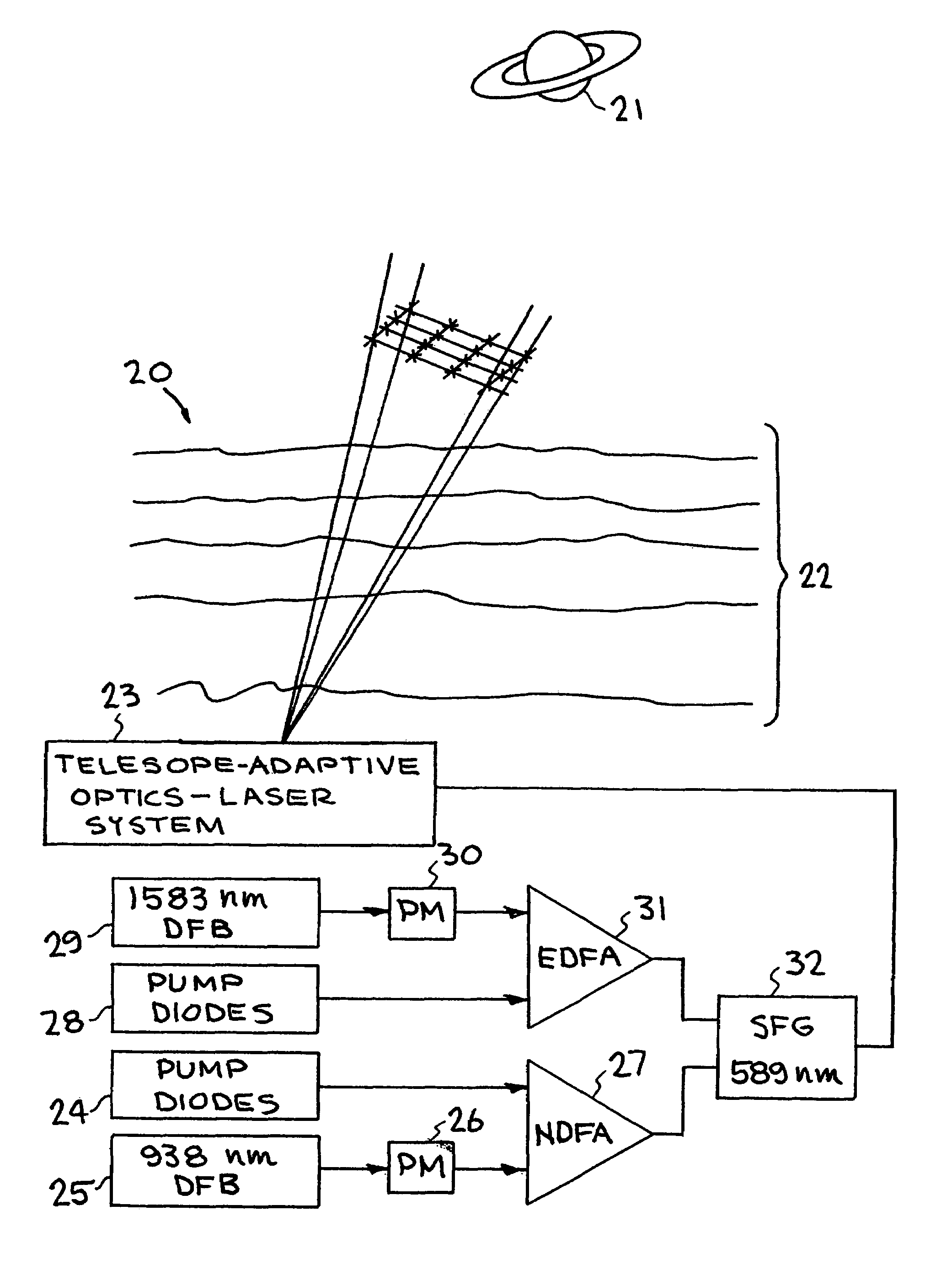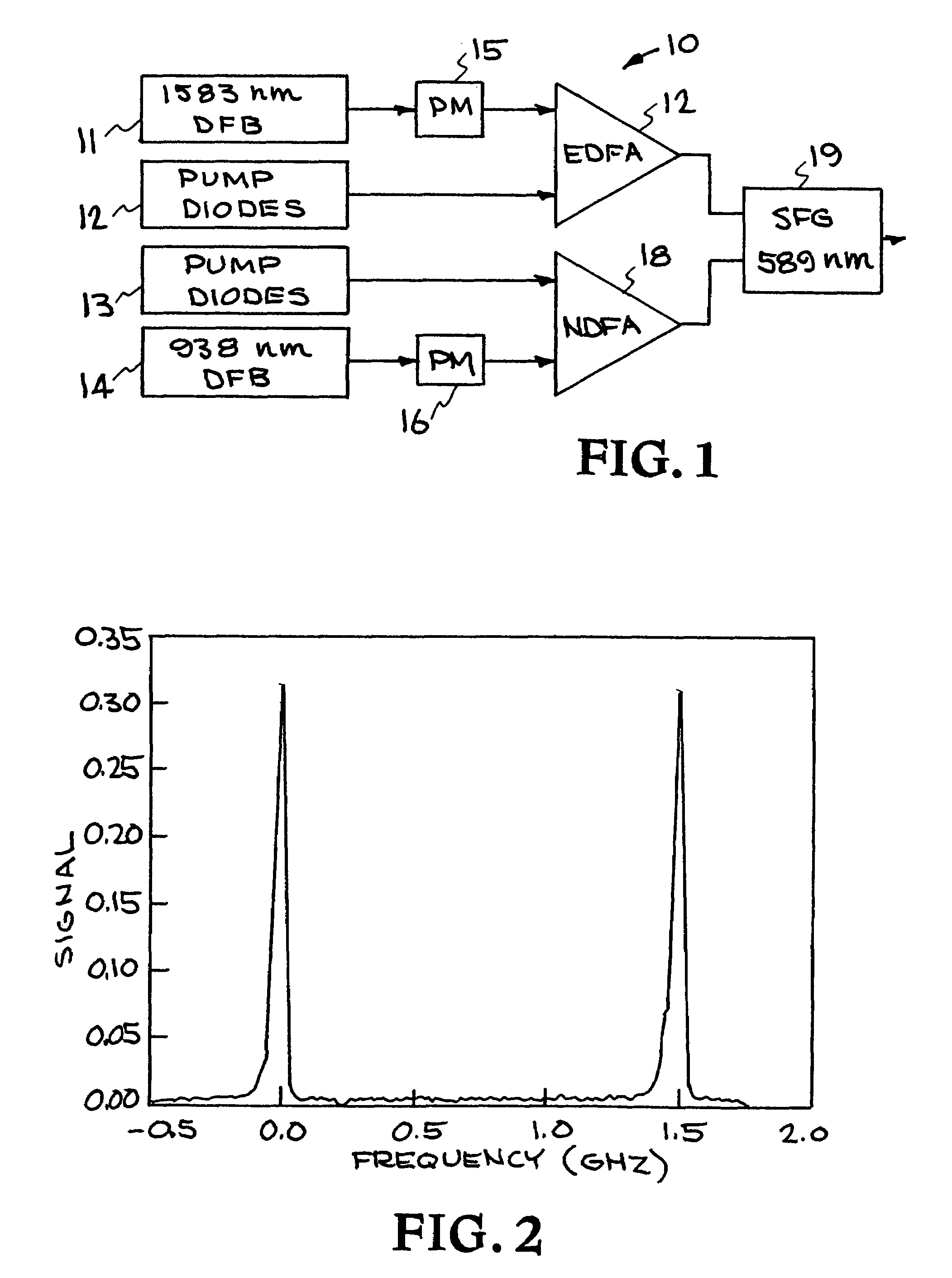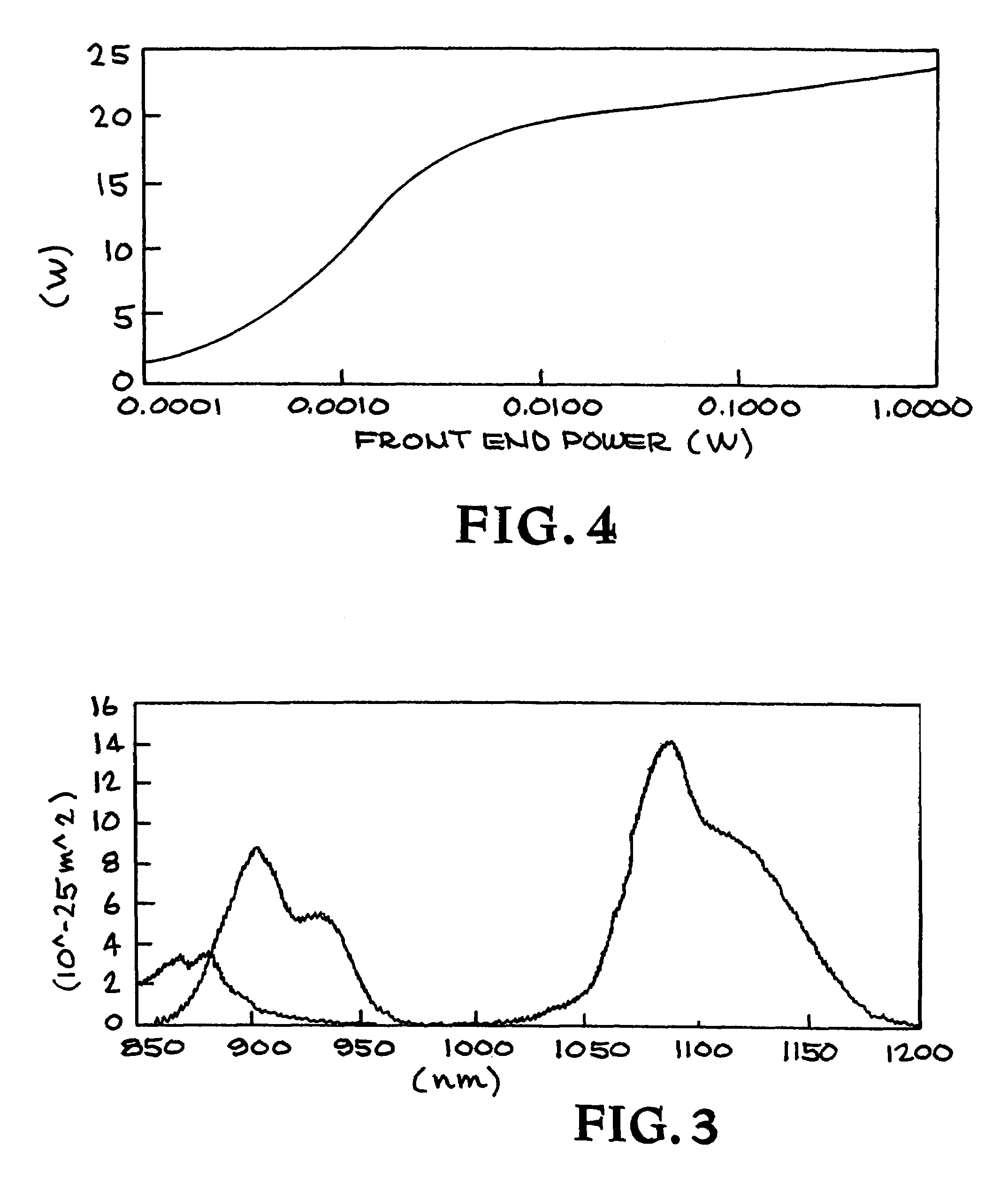Synthetic guide star generation
a technology of synthetic guide stars and guide stars, applied in the field of synthetic guide stars, can solve the problems of loss of effective sensitivity, cover a small fraction of the sky, and are difficult to adequately correct passive systems
- Summary
- Abstract
- Description
- Claims
- Application Information
AI Technical Summary
Problems solved by technology
Method used
Image
Examples
Embodiment Construction
[0026]Referring now to the drawings, specific embodiments of the invention are shown. The detailed description of the specific embodiments, together with the general description of the invention, serve to explain the principles of the invention.
[0027]Synthetic guide stars can be produced by optical excitation of atoms contained in the mesosphere at an altitude of approximately 90 km. The generation of brightly-fluorescent guide stars for adaptive optics requires precise control of the laser frequency and bandwidth to maximize the return signal. Several laser technologies were investigated to generate 589 nm sodium D-line light for laser guide star applications. The sodium-laser embodiment of the present invention uses two fiber lasers operating at or near 938 nm and at or near 1583 nm, respectively. Very stable fiber oscillators followed by high-average-power double-clad fiber amplifiers are used to generate the frequency-stable cw output powers required for the nonlinear wave-mixin...
PUM
 Login to View More
Login to View More Abstract
Description
Claims
Application Information
 Login to View More
Login to View More - R&D
- Intellectual Property
- Life Sciences
- Materials
- Tech Scout
- Unparalleled Data Quality
- Higher Quality Content
- 60% Fewer Hallucinations
Browse by: Latest US Patents, China's latest patents, Technical Efficacy Thesaurus, Application Domain, Technology Topic, Popular Technical Reports.
© 2025 PatSnap. All rights reserved.Legal|Privacy policy|Modern Slavery Act Transparency Statement|Sitemap|About US| Contact US: help@patsnap.com



